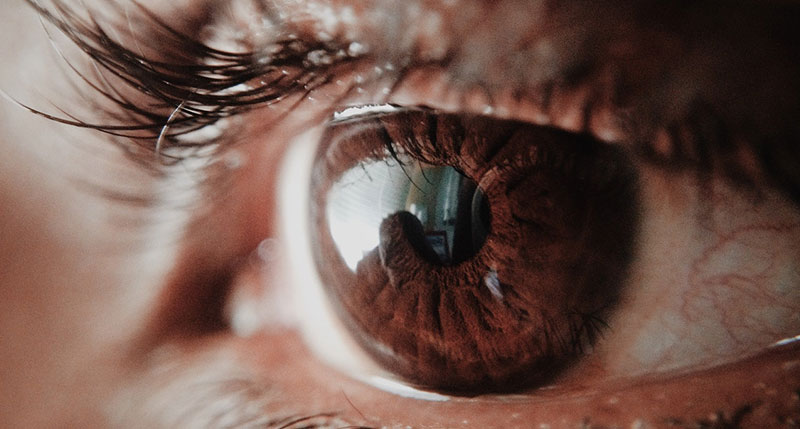November is National Diabetes Awareness month. If you or someone you love are living with diabetes, you likely understand the importance of controlling blood sugar levels to stay within the target range your doctor sets. When blood sugar levels are well-controlled, it can help prevent or delay serious, long-term health issues including vision loss, heart disease, and kidney disease.
Diabetes can have a severe impact on your eyes, resulting in vision changes, vision loss, and even blindness. That’s because high blood sugar damages the tiny capillaries in the eye’s most sensitive tissues that relay information to your brain to produce good vision. Once high blood sugar levels cause damage to the retina, the vision loss you suffer is irreversible.
But there’s hope! By following your doctor’s advice, monitoring blood glucose levels, and keeping blood sugar levels under control, you can prevent or delay serious eye damage.
Here are 6 action steps people with diabetes can take to protect their vision:
- Know Your Numbers
The sensitive blood vessels that supply the most vulnerable parts of your eye are often the first to suffer damage when blood sugar levels spike. Specifically, high blood sugar affects the retina. The retina is the thin tissue covering about 65% of the back of your eye. It’s home to millions of light-sensitive cells that enable your eyes to relay information about what you’re seeing to your brain through the optic nerve. When blood sugar spikes, it damages the blood vessels that supply your retina. This can cause blurry vision—which may be temporary or permanent. People with diabetes are at high risk for three specific eye diseases: diabetic retinopathy, glaucoma, and cataracts. By knowing your blood sugar numbers and keeping them in target range, you can reduce your risk for these sight-stealing conditions.
- Quit Smoking
According to the CDC, in 2019, over 34 million adults were daily smokers—that’s 14% of the population. Smoking kills 480,000 Americans each year. It’s the No.1 cause of preventable death in the US. With the stress of the pandemic, it’s likely those numbers have increased. Smoking harms every single bodily system, and is particularly harmful for diabetics. Smoking damages the body’s veins, arteries and capillaries, which further irritates the damage to the eyes associated with diabetes. If you’re a smoker, stop smoking—today! If you’re a smoker with diabetes, stop smoking—yesterday!
- Move It
Just as smoking is bad for every bodily system, exercise is good for every bodily system—so get moving! Walk around the block a few times at lunch. Park at the far end of the parking lot and take some extra steps. Work out with a friend at the gym or on Zoom. Regular exercise helps control blood sugar levels, and can therefore lower your risk for developing diabetic-related eye disease. So put it on your calendar each week to make sure you save time for this life-enhancing appointment with yourself. Talk with your doctor before starting any exercise program to find out which exercises they recommend for you.
- Rock Your Sunglasses
While you’re outside walking around the block for exercise, don’t forget your sunglasses! Even when it’s cloudy, the sun’s UVA and UVB rays penetrate cloud cover and damage your eyes, contributing to eye conditions such as cataracts and macular degeneration. So grab your sunglasses on your way out the door to protect your vision in style.
- Focus on Healthy Eating
We’ve heard it since childhood: You are what you eat. Healthy eyes start with healthy meals. To protect diabetic eyes, eat a well-balanced diet that includes foods that give your body healthy nutrients. These include Vitamin A, Vitamin C, Vitamin E, Beta-Carotene, Lutein, Omega-3 fatty acids, zinc and zeaxanthin. You can achieve this by eating a diet rich in colorful fruits and vegetables, leafy greens, fatty fish such as salmon, tuna or mackerel, nuts including walnuts and almonds, plus beans, lentils, and mushrooms.
- Annual Dilated Eye Exam
We saved the best for last: To ensure that your efforts to keep blood glucose in check are helping to keep your vision healthy, visit your eye doctor each year—or more often if recommended—for a dilated comprehensive eye exam. This visit will include a screening for diabetic retinopathy, glaucoma, and cataracts. When your eyes dilate, the pupil widens so that your optometrist can clearly see the back of your eye to examine the retina, the macula, and optic nerve. By examining these delicate tissues, your eye doctor can detect early stages of diabetic retinopathy long before you notice any symptoms. This early diagnosis combined with preventive action can mean the difference between losing vision permanently and maintaining your ability to see clearly.
If you notice any blurred vision or changes to your vision between regularly scheduled appointments, it’s critical that you call your optometrist to discuss these changes. Don’t wait until your next appointment—your vision could be at risk if you do.

